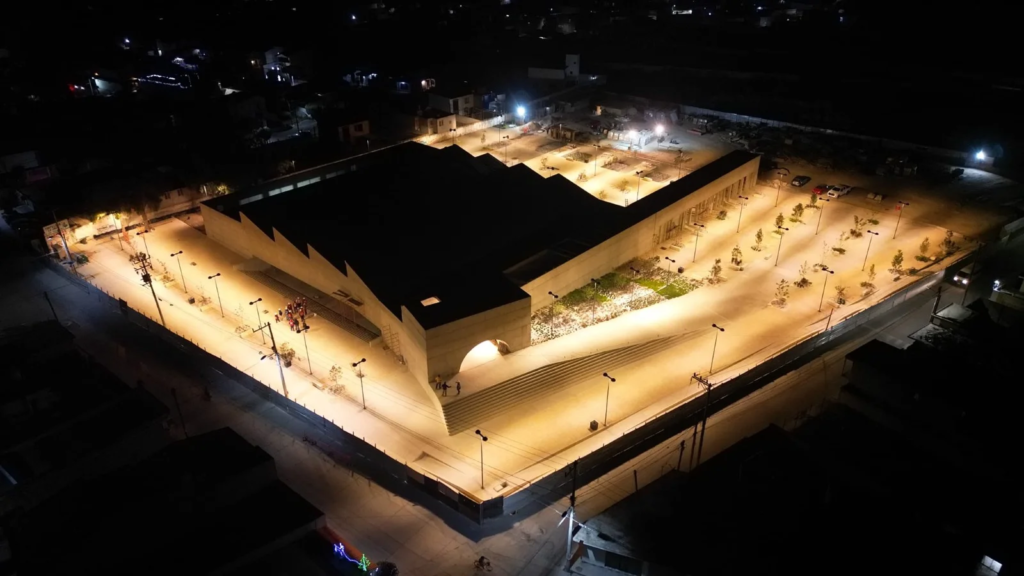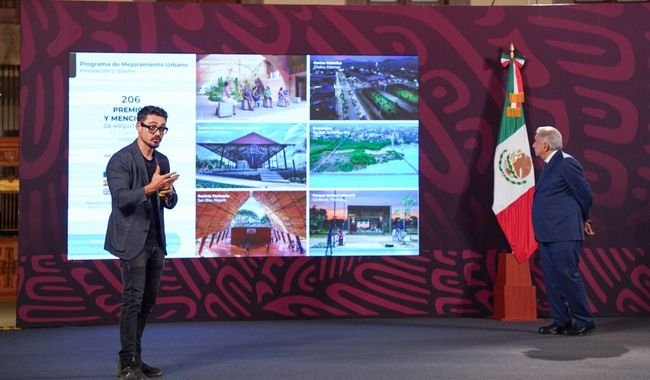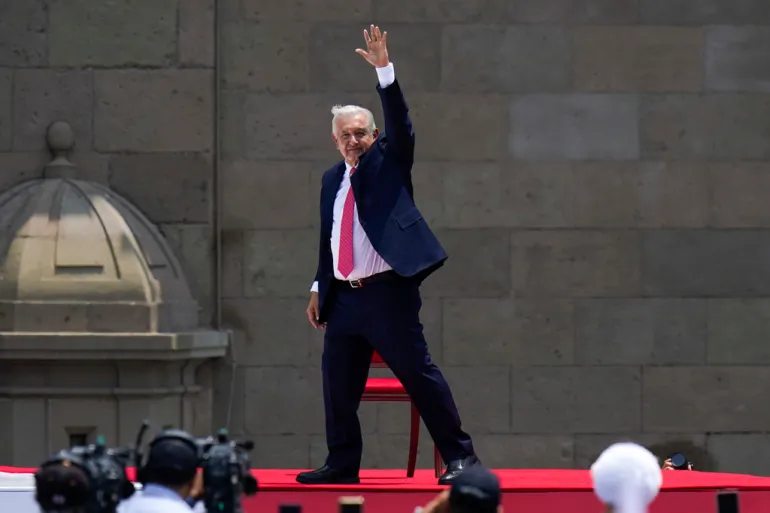Mexico’s Transformation Through Public Architecture: A Legacy of Community and Inclusion
In the heart of Huicalco, a working-class neighborhood in Tizayuca, Mexico, a striking new community center named Complejo Colibrí stands as a symbol of the nation’s ongoing “Fourth Transformation.” This facility, one of over 1,200 public projects constructed during former President Andrés Manuel López Obrador’s tenure, exemplifies his administration’s efforts to build a more inclusive Mexico. It serves as both a practical resource and a visible expression of a political commitment to reduce inequality through strategic investment in public infrastructure.
The structure, designed by renowned Mexican architectural firms G3 Arquitectos and Anonimous, spans over 1.7 hectares. Its brutalist design houses classrooms, sports courts, and office spaces, offering a space where sports, education, and culture converge.

The thoughtful layout, which includes landscaped promenades and seating areas, has quickly become a vital resource for residents, fostering a sense of belonging and providing a safe environment for local youth.
Revitalizing Public Space to Strengthen Community
Before the completion of Complejo Colibrí, the site was one of many vacant lots scattered across Tizayuca. Despite the city’s proximity to major urban centers like Mexico City and Pachuca, it received minimal investment in public infrastructure, and as the region’s population grew, limited recreational spaces contributed to elevated levels of crime and social disconnection. The new community center has since transformed this space, attracting hundreds of residents who now attend workshops in art, crafts, and music or gather for community festivals. It is helping address socio-spatial fragmentation by uniting people across different backgrounds and income levels, rekindling a sense of community in Tizayuca.
While Tizayuca has twenty-three community centers, many lack the funding and resources to adequately serve the city’s increasingly diverse population. Complejo Colibrí, by contrast, provides a modern, adaptable space that fulfills the unmet recreational and cultural needs of the community, highlighting the gaps left by previous administrations and reflecting a renewed commitment to socially inclusive infrastructure.

The Role of Socially Oriented Architecture in Mexico’s Transformation
Mexico’s new public infrastructure reflects a stark departure from prior decades of neoliberal governance, which saw public spaces left to deteriorate or privatized. In response, the López Obrador administration empowered the Secretariat of Land and Urban Development (SEDATU) to identify and build projects that would serve communities long overlooked by prior governments. The aim was to bridge the divide between affluent urban centers and economically marginalized regions by constructing spaces that provide both safety and communal pride.
Under the leadership of Román Meyer-Falcón, SEDATU collaborated with prominent architects to execute an ambitious urban improvement program, resulting in revitalized parks, markets, libraries, and museums across more than 190 communities nationwide.
These projects not only underscore the government’s shift toward equitable development but also elevate the role of architecture as a means to instill dignity and strengthen social cohesion in Mexico’s communities. Each space, from the Complejo Colibrí in Hidalgo to the Museo Meteorito in Yucatán, combines traditional materials with modern designs, making public spaces accessible and reflective of local culture.
An Enduring Architectural Legacy and the Path Forward
The public infrastructure initiatives undertaken from 2018 to 2024 represent one of López Obrador’s most lasting contributions. Observers note that these structures, with their emphasis on quality and community orientation, are reshaping Mexico’s landscape in a way reminiscent of the post-revolutionary modernist movement, which prioritized functional, inclusive public architecture. This transformation affirms the value of designing spaces that reflect social equity, marking a departure from decades of limited or minimal public investment.
While this wave of infrastructure investment has brought vital resources to underserved areas, sustaining these projects poses challenges. Many communities lack the funding and technical expertise needed to maintain them effectively, resulting in potential closures or neglect. Observers argue that collaboration with state and municipal governments, alongside local communities, will be essential to the continued success of these projects. Programs like Mexico City’s Utopías initiative in Iztapalapa offer a model, showing that when communities are engaged and empowered to take ownership, public spaces become self-sustaining resources.
As SEDATU shifts its focus toward housing, it is clear that the López Obrador administration’s emphasis on accessible, high-quality public spaces has laid the groundwork for a more inclusive and connected society. The Fourth Transformation has redefined the function of public architecture in Mexico, ensuring that these new spaces will remain symbols of social equity, communal pride, and a testament to the power of inclusive urban development.



